Today, oil and gas is utterly crucial to our society. Many of us enjoy a lifestyle that the generations before us could barely dream of. We’ve spent a long time getting this far, and hydrocarbon exploration and usage has a long history. Here is a summary timeline history of oil usage and exploration, from 40,000 years ago until today:
Ancient Oil & Gas
- The first evidence for oil product usage was from a very long time ago – natural bitumen has been found on stone tools from Neanderthal sites in Syria dating from ~40,000 years ago.
- By ~3000BC the Indus community of Mehrgarh used naturally occurring bitumen to waterproof crop baskets.
- Herodotus, the ancient Greek historian, claimed that asphalt was used in the construction of the towers of Babylon, around 2000BC. Oil pits were mined near Ardericca, not far from Babylon, and asphalt was also recovered from the banks of local rivers. The present day site of Babylon is at Hillah ~85km south of Baghdad, & natural seeps are still present adjacent to the Euphrates today. The oil described was natural leakage from the Jurassic Iraqi petroleum system, which remains a world-class petroleum province to this day.
- Ancient Egyptians used bitumen during the creation of their mummies – the word mummy is derived from the Arabic mūmiyyah (bitumen).
- Ancient Greeks & Romans, including Pliny the Elder, observed “eternal fires” around the Absheron peninsular (in modern Azerbajian), along with others in Persia and Turkmenia. These eternal fires, created by natural seepage & ignition of gas from the ground, were thought to have inspired Zoroastrainism, one of the world’s oldest religions. The “Pillars of Fire” near modern Baku became a center of worship & pilgrimage, & Zoroastrian priests were entitled athravan (keeper of the fire). The modern word Azerbaijan has a root in Aberbadagan (garden of fire).
- One of the earliest firmly recorded uses of asphalt as a road building material was in Babylon around 625 B.C., in the reign of King Naboppolassar. An preserved inscription records the paving of Procession Street in Babylon, which led from the palace to the north wall of the city, ‘with asphalt and burned brick.’
- The earliest oil wells were drilled in China around 347AD, with depths of up to 240m (~800ft). The drilling was very simple, with basic drill-bits attached to bamboo poles. While the oil was considered to have value, at the time it was actually a secondary commodity – it was burned to evaporate brine to produce the most important ancient commodity of all: salt.
- Chinese drilling continued until the 10th century, by which time extensive bamboo pipelines connected oil wells with salt springs. At around this time Shen Kuo of the Song Dynasty described petroleum as rock-oil (石油 (Shíyóu)), and even noted marine fossils far inland, suggesting some of the principles of geology.
- Also during the 10th Century, al-Mas’udi, an Arabic geographer, observed oil seeps in Sicily, Oman, Yemen, Iraq, Iran, Turkmenistan, Tashkent, India, Sumatra, and Azerbajian. He called the Absheron penisular in modern Azerbaijan bilad al-naffata (the land of the naphtha fountain). By this time it is estimated that 10,000-15,000 people lived in and around Baku, almost of all of whom would have been involved in the industry of extraction of oil and its transportation by ship, cart, or camel. Extraction methods in those times were extremely primitive —mainly hand dug wells at natural seep locations taken to a very shallow depth. The source rock for these historical oil seeps is now known to be the Miocene Maykop Formation, and seeps still exist. The Absheron-Chirag-Gunashli (ACG) & Shah Deniz fields offshore Azerbaijan are amongst the world’s largest modern fields, and the source of 95% of Azeri exports & 50% of Azeri GDP today. The ACG field contains 5-6 billion barrels of recoverable reserves.
- The increased economic extraction of oil from the Caspian region was at least partly facilitated by a technological breakthrough – refining. Persian chemists first distilled kerosene for lighting on an artisanal scale around the 9th to 10th centuries. Similar distillation took until the 12th century to become available in western Europe.
 Some two centuries later Yaqut al-Hamawi, in his 12th century book The Book of All Lands noted that Baku was one of wealthiest muslim cities, with two “oil-fields” bringing in 2000 silver dirhams a day. By the 1730s these same two oil fields were still being extracted and were named the Balakhani-Sabunchi-Romany & Bibi-Eybat fields, after local owners. It was estimated that their combined output was ~3500 tons annually (~ 80 or 90 barrels a day). This is extremely modest production by today’s industrial standards, but more than half of it was surplus to Baku’s own needs, and thus exportable. As a result of their scale, these fields remained active & dominated middle eastern oil production until modern times, with their names still used for many subsurface rock formations in the South Caspian region today.
Some two centuries later Yaqut al-Hamawi, in his 12th century book The Book of All Lands noted that Baku was one of wealthiest muslim cities, with two “oil-fields” bringing in 2000 silver dirhams a day. By the 1730s these same two oil fields were still being extracted and were named the Balakhani-Sabunchi-Romany & Bibi-Eybat fields, after local owners. It was estimated that their combined output was ~3500 tons annually (~ 80 or 90 barrels a day). This is extremely modest production by today’s industrial standards, but more than half of it was surplus to Baku’s own needs, and thus exportable. As a result of their scale, these fields remained active & dominated middle eastern oil production until modern times, with their names still used for many subsurface rock formations in the South Caspian region today.- In the 16th century, Sir Walter Raleigh noted the huge pitch lake in the southwest peninsular of Trinidad, using the asphalt to caulk his battered ship. Today the “lake” is though to contain around 10,000,000 tons of pitch, sourced from Trinidad’s Late Cretaceous Naparima Hill & Gautier Formation marine shale source intervals.
- Back on the Absheron peninsular, in modern Azerbaijan, a stone bearing an Arabic inscription has been found in a (now exhausted) petroleum pit that states that it had been worked in the year 1597, giving the name of the operator who leased it. This may be the first direct evidence of a petroleum production licence.
- As western exploration extended into North America, natural oil springs were found in New York and visited by Joseph de la Roche D’Allion in 1632, and Peter Kalm published a map of Pennsylvanian oil seeps in 1753. Moravian missionaries reported “oil wells” and “oil skimming” from natural seeps, with the Seneca Indians trading the products with the Niagara peoples. In 1790 Nathanial Carey skimmed oil from natural seeps near Titusville, Pennsylvania, delivering it to customers on horseback.
The Industrial Revolution: The Modern Age of Oil
- The world changed utterly & completely between 1760 and 1840. Almost every aspect of daily life was affected. The scientific and technical advances resulting from the European Enlightenment, and the resulting Industrial Revolution, spread around the world from Britain, with countless new technologies in textiles, steam power, and iron making.
- Crucially, steam power, initially powered by coal, meant that man could harness chemical energy to power engines & manufacturies for the first time. It’s almost impossible to convey how radical this was in a world previously limited by human strength, horse power, and wind. Prior to the Industrial Revolution economic growth had broadly just accommodated the increase in population; after the Industrial Revolution individuals became richer – per capita GDP gew rapidly.
- During the early Industrial Revolution coal fuel dominated the energy mix, replacing wood or dung as the fuel of choice. Oil was used, but it was whale oil rather than rock-oil. Whale oil was important for a host of uses, including heating, lubrication, soap, the processing of textiles & rope, and, crucially, candle wax & lamp oil.
- Whale oil was far superior to tallow or bees wax as it produced a smokeless flame. The Spermacetti candle became so prevalent that it created a new light standard: the lumen. As a result, whale oil became incredibly valuable. A single large sperm whale could hold as much as three tons of high quality sperm oil.
- By 1775 Massachusetts, New York, Connecticut, & Rhode Island produced 45,000 barrels of sperm oil a year. That’s about 2,200 whales, caught by a fleet of around 735 ships.
- The population of the US in 1800 was 5,308,483, of which 893,602 were slaves. The population of the UK was ~12 million.
- By 1820 the United States was forced to import additional whale oil.
- It has been estimated that 236,000 whales were killed by American whalers in the 19th century alone.
- The price of whale oil reached a maximum just before the American Civil War in 1856, at $3.84 per gallon. That’s about $3,400 per whale, or about $85,000 adjusting for inflation to 2010 dollars.
The Early Modern Oil Industry
- The modern age of petroleum, or rock-oil, has been a story of technological advances.
- The first key technology was devised in 1846 by Abraham Gessner, a Canadian. Gessner developed a process to refine liquid fuel from coal, bitumen, and oil shale. The resulting fuel, kerosene, burned more cleanly and was less expensive than whale oil. There are also some reports of a possible oil-distilling factory at the Absheron Peninsular, Azerbaijan, as early as 1837, but these may have used non-industrial methods.
- In 1848 F. N. Semyenov, a Russian engineer, drilled a well to 21m at Bibi-Heybat on the Absheron peninsular, Azerbaijan. By 1861 this well produced 90% of the world’s oil.
- In 1850 Gessner created the Kerosene Gaslight Company & installed lighting in the streets of Halifax.
- In 1851 James Young, a scottish chemist, set up a commercial plant to produce paraffin by the distillation of coal and oil shale.
- In 1853 Ignacy Lukasiewicz, a polish pharmacist interested in the potential of refining seeping rock-oil as a cheap alternative to whale oil , improved Abraham Gesner’s earlier refining method to produce clear kerosene from seep petroleum.
- A year later Lukasiewicz opened the world’s first modern “oil mine” at Bobrka, near Krosno. Two years later he opened the first industrial refinery in the world, at Ulaszowice near Jaslo.
- The new refining technology led to a greater demand for petroleum, or rock-oil. Natural whale oil; expensive, difficult to catch, with whales being hunted to near extinction was replaced by synthetic, technologically advanced kerosene and paraffin.
- The first modern commercial oil well was in Poland in 1853, with a second in Romania in 1857. However, both these wells were hand-dug. Romania is actually the first country in the world to have its crude oil output recorded in international statistics, at 275 tonnes.
- The first oil well in North America was drilled in 1858 by James Miller Williams in Oil Springs, Ontario (named for its natural oil seep).
- The first US oil well is more famous. It was drilled (not dug) by Edwin Drake, using a steam engine to reach a total depth of 21m at Oil Creek (also named for its natural oil seep), near Titusville, Pennsylvania in 1859. Initial production was 25 barrels per day (bpd), but by the end of the year production had dropped to 15bpd.
- By 1860 Gessner & his competitors had built 40 kerosene plants across the United States. Among Gessner’s competitors were John D Rockefeller & Samuel Andrews, who would go on to set up a network of distilleries called Standard Oil.
- In 1860 America’s oil production was 0.5 million barrels a year, by 1861 it was 2.1 million barrels a year.
- In 1870 the average American or British citizen used between 2.2 to 2.5 tonnes of oil equivalent per year. This is approximately the same as modern Haiti or Senegal, countries that were among the very lowest energy consumers in the world in 2003.
The American Civil War
- The American Civil War, 1861-1865 was arguably the world’s first Industrial War, with large scale deployment of machine made fire-arms in a war ostensibly over the abolition of slavery.
- It is arguable that slavery could only be abolished due to the availability of a cheaper, more efficient, work as the result of industrialisation and the availability of cheaper energy – coal initially. Morals may have started the push, with the Lord Mansifeld’s judgement in Britain in 1772, but economics may have finished the job – a northern factory full of machines fueled by coal turned out to be cheaper and more efficient than a southern field farmed by slaves.
- It is possible that the real cause of emancipation & the abolition of slavery, around the world, was the availability of cheaper energy and more efficient machines to do the work.
- 1 modern barrel of oil contains the energy equivalent to around 23,200 hours of human work output.
The late 1800s
- By 1865, after the American Civil War, petroleum cost 59 cents per gallon.
- By 1870 kerosene cost 26 cents a gallon.
- In that same year, 1870, Standard oil was incorporated in Ohio by well known industrialists, including John D Rockefeller. Just four months later Standard Oil had absorbed or destroyed its competition in Cleveland, and by 1872 it dominated the northeastern United States. Standard Oil went on to become the world’s largest oil refiner, dominating the oil products market until its breakup in 1911, making John D Rockefeller the richest man in the world in the process. Rockefeller was worth the equivalent of $318bn (2007 dollars). Bill gates is worth in the order of $66bn today.
- In 1873 Robert Nobel, the oldest brother in the Nobel family visited the Absheron peninsular for the first time. The Nobel family would go on to make their fortune from the extraction, distillation, and shipping of oil from Azerbaijan.
- By 1877 the whaling industry had been so devastated by competition (and the Civil War) that only 39 whaling ships remained, and the price of whale oil had dropped to 40 cents a gallon.
- In 1892 Samuel Samuel (honestly, a double name…) saw potential in exporting lamp oil from the Caspian Sea (Azerbaijan), and commissioned the world’s first oil tanker, the Murex (latin: snail shell).
- The Royal Dutch Petroleum Company was formed in 1890 by Jean Baptiste August Kessler & Henri Deterding via royal charter from King William III of the Netherlands. It was planned that work would focus on the Dutch East Indies. The firm would later merge with the “Shell” Transport & Trading company of the Samuel family to create Royal Dutch Shell.
- By 1895 petroleum oil was just seven cents a gallon.
- US oil production in 1900 was 174,000 barrels a day (63,000,000 barrels a year). The population of the world was approximately 1.65bn. The population of the US was 76,212,168. The population of the UK was ~36.5 million.
- By the dawn of the 20th century energy had become much, much cheaper, with ever more applications for its use. No longer was mankind limited by what could be achieved by manual labour, horse drawn power, or the force of the wind. Science and technology, with the help of first coal, and then petroleum, had changed the world.
More New Technology – the Automobile
- During the late 19th century a host of inventors and engineers applied modern science and technology to continue the work of the Industrial Revolution. They constantly improved engine technology, reducing reliance on manual or animal labour as the efficiency of their engines grew, enabling greater use of the newly available refined rock-oil, or petroleum, in ever more inventive ways. In this way, ancient, buried, chemical energy was transformed into readily usable, cheap, mechanical energy.
- It’s hard to over-state the radical nature of this change. Today, with our environmental considerations, it’s easy to look back at this with almost a sneer, to worry about a lost rural idyll or a golden age, but it was utterly positively revolutionary, transforming the world and improving countless millions (billions) of lives. It was only in the late 20th century, as the world’s population boomed, that the environmental problems came home to roost.
- In 1876 Nikolaus Otto, working with Gottlieb Daimler and Wilhelm Maybach, and building upon his earlier 1862 commercial design (and, possibly unknown to him, the patent of Alphonse Beau de Rochas) started the design of the four-cycle engine.
- In 1879 Karl Benz was granted a patent for an internal 2-stroke combustion engine. By 1885 he had developed a four stroke engine and produced the world’s first automobiles.
- In 1884 Edward Butler constructed the first gasoline internal combusion engine (also inventing the spark plug, magneto, coil ignition, and the spray jet carburetor) and was the first to use the word petrol.
- In 1893 Rudolf Diesel received a patent for the first compression ignition (diesel) engine.
- By 1900 there were 8000 automobiles registered in the United states, half of which had been sold that year. By 1901 there were 14,800. By 1911 there were 667,000, and by 1920 there were 8,500,000.
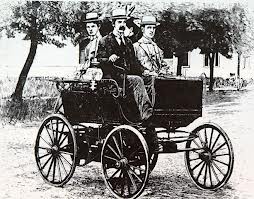
Oil Production Soared in the 20th Century
- Throughout the 20th century oil and gas production grew exponentially. Our standard of living today is the result of, and utterly dependent upon, our ability to find, extract, and use this stored hydrocarbon energy.
- Historic events such as the 1929 crash, WW1, WW2, the Middle East oil embargo, and the recent economic recessions did affect demand, but today the globe produces around 30 times as much crude as in 1900.
- The Middle East oil embargo of the 1970s was the only political event to markedly decrease crude production. Since the 1970s oil demand has continued to increase, but at a lower demand growth trend. The period between 1945 and 1970 also represents a period of faster growth than the post 1970 period. It is perhaps interesting to note the correlation (not necessarily causation) between the change in demand growth after the 70s oil spike & the failure of the 1st Bretton Woods agreement. Between 1971 and 1975 fixed exchange rates schemes collapsed and the new floating exchange rates, with modern fiat currency, detached from convertibility, began.
- In 2000 the world produced ~66 million barrels a day. The US produced around 5.8 million barrels a day, down from a peak of around 10 million barrels a day in 1970. The population of the US was 281,421,906. The population of the UK was 58, 789, 194.
- By 2006 we had consumed around 1 trillion barrels of oil.
Frontier Exploration at the Turn of the Century
- By the turn of the 20th century combustion engines had reduced in weight, and increased in power, enabling the Wright Brothers to complete the first powered flight in December 1903.
- At around the same time a British Industrialist, William Knox D’arcy, agreed to fund a search for Persian oil. At the time south-west Persia was a truly frontier region, with few roads, no railway, and just a single town. It was a tough place to do business. After almost bankrupting Knox D’Arcy oil was found at Masjid-i-Sulaiman on May 26 1908 at 360m (1,180 ft). 1 year later the Anglo-Persian Oil Company, a fore-runner of BP, was formed.
- The consensus of geological opinion at the time was that there was no oil on the Arabian peninsula, although there were rumours of an oil seepage at Qatif on the eastern seaboard of al-Hasa, the eastern province of Arabia.
- On January 15, 1902, ‘Abd-al’-Aziz ibn ‘Abd al-Rahman Al Sa’ud stormed Riyadh, taking the city from the Rashid tribe.
- Despite the financial panic of 1907 (the Knickerbocker Crisis), when the New York Stock Exchange fell by 50%, by 1910 significant oil fields had been found in Canada, Sumatra, Iran, Peru, Venezuela, and Mexico, all of which were being developed at an industrial level.
- Seismic technology was first devised by Ludger Mintrop, a german mine surveyor in 1914 in an effort to predict salt domes.
World War I
- During WWI oil confirmed its position as an important strategic resource.
- Arguably WWI was, at least in part, caused by Germany’s need for natural resources to fuel its rapidly expanding industrialisation, as it caught and then quickly passed Britain in terms of output of steel, machine tools, chemicals, and electrical goods. Germany also required markets to sell the completed products to. The solution, as perceived by Deutsche Bank’s Georg von Siemens, was a “penetration pacifique” of the debt-ridden Ottoman Empire, a realm as yet un-industrialised.
- by WWI war had become truly mechanised, with tanks and airplanes replacing horses. Germany’s shortage of oil supplies hindered their ability to produce aircraft, automobiles, and engines, whilst the United States was able to freely produce material, a major factor in the outcome of the war.
- In 1913, ‘Abd-al’-Aziz ibn ‘Abd al-Rahman Al Sa’ud forces captured the province of as-Hasa from the Ottoman Turks. In 1922 he completed his conquest of the Nejd, and in 1925 he conquered the Hijaz. By 1932, the Kingdom of Saudi Arabia was proclaimed with ‘Abd-al’-Aziz Ibn Saud as king. It was not known at the time, but beneath them lay the world’s largest oilfield, and Saudi Arabia would go on to be the world’s most important petro-state.
The First Finds were the Largest
- In the aftermath of WWI, the search for oil began again in earnest.
- The first exploration discovery to use seismic was made in 1924 (in Texas or Mexico).
- The 5th largest oilfield in the world (in 2001), Kirkuk was discovered in 1927.
- In the early 1930s Abdul Aziz Ibn Saud granted exploration to several companies to explore in Saudi Arabia.
- Oil was discovered in Bahrain in 1932. Frank Holmes, an Anzac Major, had heard about oil seeps in the gulf region while at Gallipoli and Ethopia during WWI and had leased a concession from the sheikh of Bahrain, drilling with the help of Standard Oil of California (later to become Chevron) after Gulf Oil was prevented by commercial restrictions from taking part.
- In 1933 Standard Oil of California (later to become Chevron) created a subsidiary called California Arabian Standard Oil Co (CASOC, later to become Saudi Aramco).
- Today Saudi Aramco is, by far, the world’s largest oil company. It has more than 260bnbbls of reserves, almost 300 trillion cubic feet of gas reserves. It produces in the order of 8 billion barrels a year, and operates the world’s largest single hydrocarbon network, the Master Gas System.
- In 1936 after failing to find oil, The Texas Oil Company (Texaco) bought a 50% stake in CASOC. After a string of disappointments and failures the first true exploration success came in 1938 at Dammam No 7 well in Dhahran. The well immediately produced over 1,500 barrels a day.
- The world’s 2nd largest producing field today, Burgan, Kuwait, was discovered in 1938. The Greater Burgan, a wider area around Burgan, is the world largest clastic (sandstone) oil field with the total surface area of about 1000 km2. It includes three producing subfields: Burgan itself (500 km2), Magwa (180 km2) and Ahmadi (140 km2).
World War II
- World War II was the most mechanised, industrial, and brutal war in human history. Its industrial nature ensured that oil was strategically crucial. Industrial complexes were destroyed in the allied strategic bombing effort, including refineries, storage depots, and chemical works. RAF Bomber Command view oil as the life-blood of Germany, and set about to break it.
- Additionally, many known oil fields were fought over. The Axis powers considered the Azeri oil-fields a key strategic target, and Hitler was even pictured with a cake in the shape of the Absheron peninsular.
Post War Recovery
- Subsequent to World War II re-industrialisation began again in earnest, with oil exploration focusing again on the Middle East.
- The largest producing field in the world, Ghawar, Saudi Arabia, was discovered in 1948. Measuring 280 by 30 km (170 by 19 mi), it is by far the largest conventional oil field in the world. Cumulative production until April 2010 exceeded 65 billion barrels. Currently, Ghawar is estimated to produce over 5 million barrels of oil a day (6.25% of global production). That’s the equivalent of around 250,000 large sperm whales, every day.
1950-1980: Oil Replaces Coal, and Exploration Discovery Peaks
- However, coal remained the world’s foremost fuel until the 1950s, almost 90 years after the first commercial extraction of rock-oil.
- The world’s 14th biggest field, Rumailia South, in Iraq, was discovered in 1953. The world’s 6th biggest field, Rumailia North was discovered in 1958. The world’s 4th biggest field, Daquing, in China, was discovered in 1959.
- Yet, just 10 years later, in the 1960s, oil discovery actually peaked. Since then we have discovered less with each passing decade.
- Alaska’s Prudhoe bay, the world’s 9th biggest field, was discovered in 1968, but did not reverse this trend.
Recent Crude Demand & Production History
- Between 1980 and 2005 crude oil and NGL demand grew from ~60mmbd to ~85mmbd.
- Much of the rise was the result of the developing world. In 1973 the OECD consumed 61.2% of the total primary energy supply, but by 2006 this had dropped to 47.1%.
- China’s oil consumption increased by 8% yearly since 2002, doubling from 1996-2006. In 2010 China became the world’s single largest user of oil.
- In terms of Total Energy Supply, the segment weighting in 2006 comprised:
- oil – 34.4% (vs. 46.1% in 1973)
- Gas – 20.5%,
- Coal/Peat – 26%,
- Nuclear – 6.2%,
- Hydro – 2.2%,
- Renewables and waste – 10.1%.
The Large Fields Matter Most…
- In 2006, just 10 oilfields accounted for 29.9% of the worlds estimated proven reserves and for 20.4% of the world’s production.
- The world’s top 20 oilfields contained ~40% of estimated proved reserves and accounted for 27.7% of the world’s production.
- The world’s top 100 oilfields contained over 65% of the world’s reserves, and accounted for over 50% of the world’s production.
- These 100 fields matter greatly to our shared future.
- Of the top 10 modern producing fields the youngest was discovered in 1976 (Cantarell, Mexico – now in decline). The youngest of the top 20 producing fields was discovered in 1985 (Marlim, Brazil – now in decline).The average age of the 19 largest oil fields is almost 70 years.
- The last four non-OPEC oilfields found with a productive capacity that exceeded one million barrels a day production were:
- China’s Daquing field, discovered in 1959
- Western Siberia’s Samotlor, discovered in 1965
- Alaska’s Prudhoe Bay, discovered in 1968
- Mexico’s Cantarell field, discovered in 1976
- After Cantarell, no new conventional field has come close to one million bopd production
- Only three oilfields discovered in the 1980s still produce over 200,000 barrels per day (as at 2008):
- Brazil’s Marlim field (530,000 barrels per day)
- Columbia’s Cusiana/Cupiagua field (300,000 barrels per day)
- Norway’s Draugen field (215,000 barrels per day)
- In the 1990s over 400 individual oilfields were discovered. Only 2.5% of these fields (10) produced over 100,000 barrels per day by 2001, although it’s worth noting that development lead times can be long.
- Today there are well over 4000 discovered and producing oil fields, but as has been shown, only a few matter. Just over 100 produce over 100,000 barrels a day, and account for over 50% of the world’s production.
The Impact of Oil on the Global Economy
- In the end, after all the buying, selling, slicing, dicing, & shuffling of paper is done, money is unable to do anything alone. Money is a fantastic technology that fosters co-operation between people that never meet, but ultimately it is a simple claim on actual work performed. We no longer rely on slavery or feudal serfdom, and most work today is not the product of human labour, but of machines. All these machines require energy, and that energy is dominantly oil. A dollar in your pocket is essentially a claim on the energy contained in a barrel of oil.
- That’s great when energy is cheap, as it was in the late 1990s.
- In 1999 oil was $17 a barrel. During that year, the average hourly wage in the US was around $13.50. So less that 90 minutes of work could buy you a barrel of oil. That’s 90 minutes of labour to buy a barrel of oil containing fossilised energy equivalent to 23,200 hours of human work output. That’s quite a multiplier.
- When energy is cheap it can be tempting to assume that it will stay cheap, and to assume that economic growth will thus be unimpeded and rapid… which might tempt you to take on a lot of debt… But that’s a problem when energy starts to get expensive.
- In a debt-based economy, as the modern world’s is, future growth is utterly crucial to pay off the debts. Deflation, common before 1900, is an anathema. The oil story is central to this dynamic. Expensive energy exacerbates economic problems, slowing growth, and potentially creating a recession.
- After years of internet & technology euphoria the US Nasdaq stock market crashed on March 10th 2000, and central banks around the world cut interest rates to prevent a recession (or worse, deflation), encouraging people and corporations to take on yet more debt.
- By the early 2000s our economy was highly leveraged, primarily due to recently invented complex financial instruments, especially mortgage derivatives.
- As a consequence of the IT revolution & globalisation the emerging economies grew more rapidly through the late 1990s and 2000s, which in turn meant that oil demand grew rapidly. Manufacturing had been outsourced to China and the country required ever increasing resources & energy to create the products that the West wanted to buy. By the middle of the 2000s the financial markets had started to worry that conventional production would soon not keep pace with demand… Oil prices started to rise.
- With every dollar rise in the oil price, people found it marginally harder to travel to work, to transport shipping, and to manufacture goods. Growth began to slow. Inflation began to seep into the system. Central banks began to raise interest rates, further impeding growth.
- By July 11th 2008 North American oil (Nymex) had risen to $147.02. The average US hourly wage in 2008 was ~$18.20, which meant a whole day’s work was required to pay for a barrel – a lot longer than the ~90 minutes at the end of the 20th Century.
- Eventually, sufficient growth necessary to pay off the debts became impossible. The system was no longer sustainable, and the western economies went first to stall-speed, and then to free-fall. The debts, mostly mortgage based, could not be repaid.
- Between September 19th 2008 and November 6th 2008 the US Dow Jones dropped by over 40%.
- There are lots of reasons for the 2008 crash, not least greed and obfuscation, but the cost of energy, from which we create work, from which derives growth, was a key element.
- Energy & resources are at the base of the economy, helping drive the co-operation, invention, and productivity of our society.
- The 2008 “Great Recession” may have been the first “peak-oil” recession… And it might be the first of many as the global economy bumps along the ceiling of how much conventional oil and gas is able to be extracted each day. As the world needs more than the ground can deliver, oil prices rise. Eventually they rise too far and reduce growth, leading to a recession, failure to pay debt, and fall in demand. In a “Peak Oil” world this could be repeated again and again, and again, as the economy is hollowed out…
- But… then came unconventional oil and gas, produced not from porous “fields”, but directly from the source rock itself.
The Rise of Unconventionals…
- Currently “Unconventionals” are being talked about as the next major technological revolution. At the end of 2012 the US experienced a supply gain of 1.1 million barrels a day vs. the previous year – a record. OPEC expects US oil & associated liquids supply to rise to 10.59 million barrels a day by 2013, the highest since 1985.
- While this is a significant and impressive technical and industrial achievement, it is not clear that it will really have the needed impact to rise to the challenge of meeting oil demand in the 21st century. The Unconventional story is moving fast, and is covered in another note, but the projected need is vast… It’s not even clear if the huge amount of activity of US Unconventionals has offset production declines elsewhere around the world in 2011-2012.
The Size of the Challenge in the 21st Century….
- In 2007 the IEA predicted that 64 million barrels per day (mbpd) of new oil capacity will be required to come onstream between by 2030 in order to meet an anticipated demand (if demand grows at 1.6% per year).
- Assuming an average conventional oil discovery size creates an additional supply of 20,000 bopd (the current world conventional field average) this represents 3200 conventional fields, or 1391 fields every 10 years.
- In the 1990s just over 400 conventional fields were discovered, less than 1/3rd of the required discovery rate. 2.5% of these fields (10) produced (at 2001) over 100,000 barrels per day.
- In the absence of multiple frontier plays, which contain world-beating elephant discoveries, or a huge increase in drilling and discovery, conventional exploration alone cannot satisfy predicted worldwide demand.
- Unconventional Oil may help, but it requires a huge step change from even the current significant investment. In 2012 Unconventional oil production in the United States was approximately 2 million barrels a day.
- Whilst modern exploration, both conventional and unconventional, is helping to have significant impact on likely future daily crude production, the oil & gas industry of the future has to:
- Reverse the declining trend of total discovery volume per year, through conventional or unconventional exploration and;
- Reverse the trend of field size per year (find more elephants that are capable of high flow rates), or;
- Massively increase the number of wells drilled per year (many small fields that will have low individual production, and decline faster) – Unconventional Oil is leading us this way, with some significant environmental issues…
- Alternatively, future production must come from arresting decline of existing fields, or;
- A fundamental change in the energy mix, with the scale of the change-over unprecedented in human history…
- Easy, right?



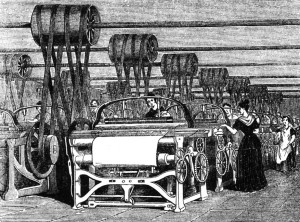
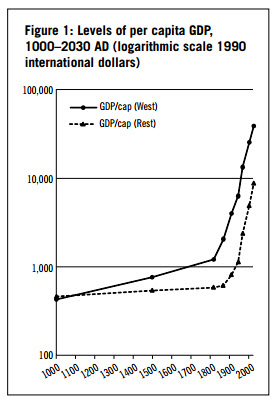


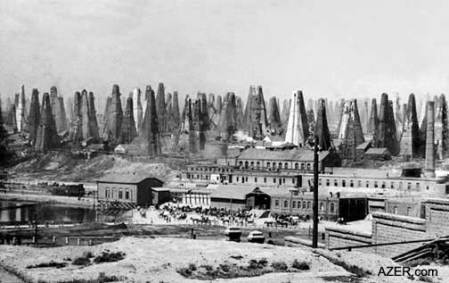
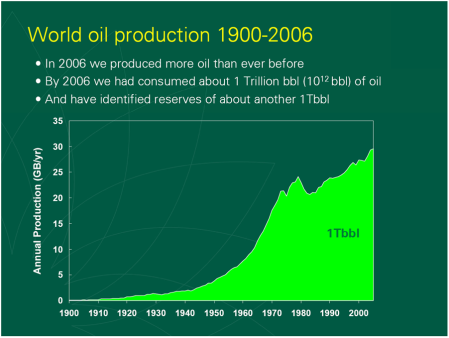
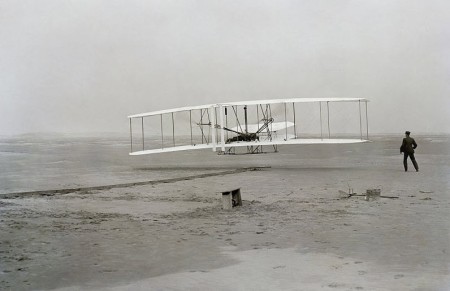
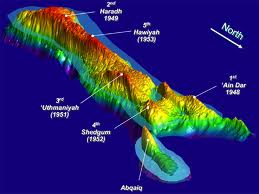


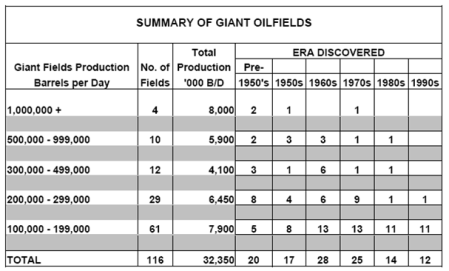
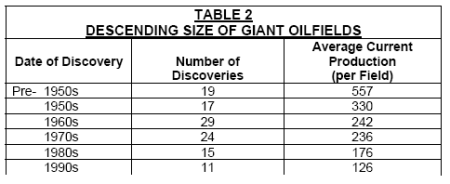
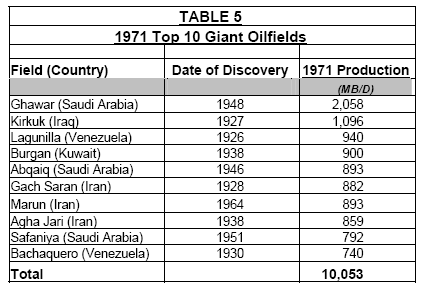
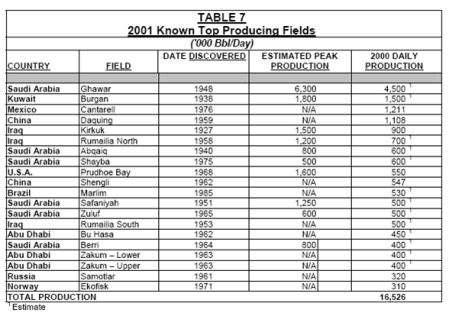
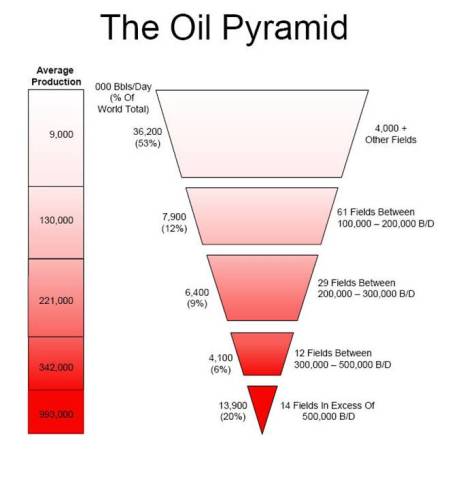
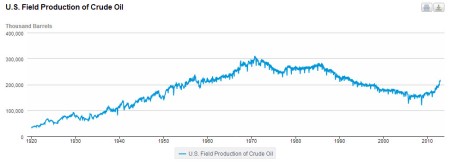
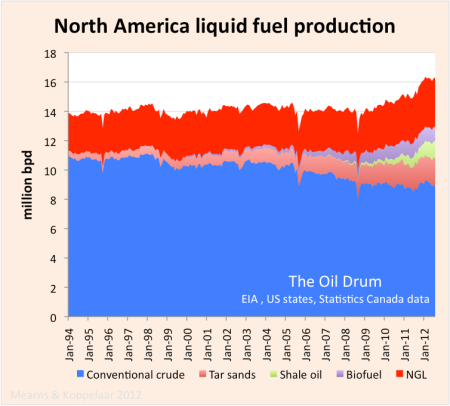


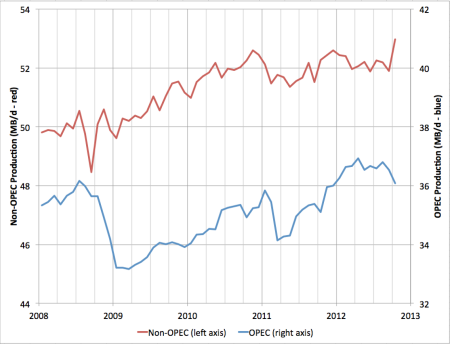
Pingback: The Fuel of Tomorrow | The View from the Mountain